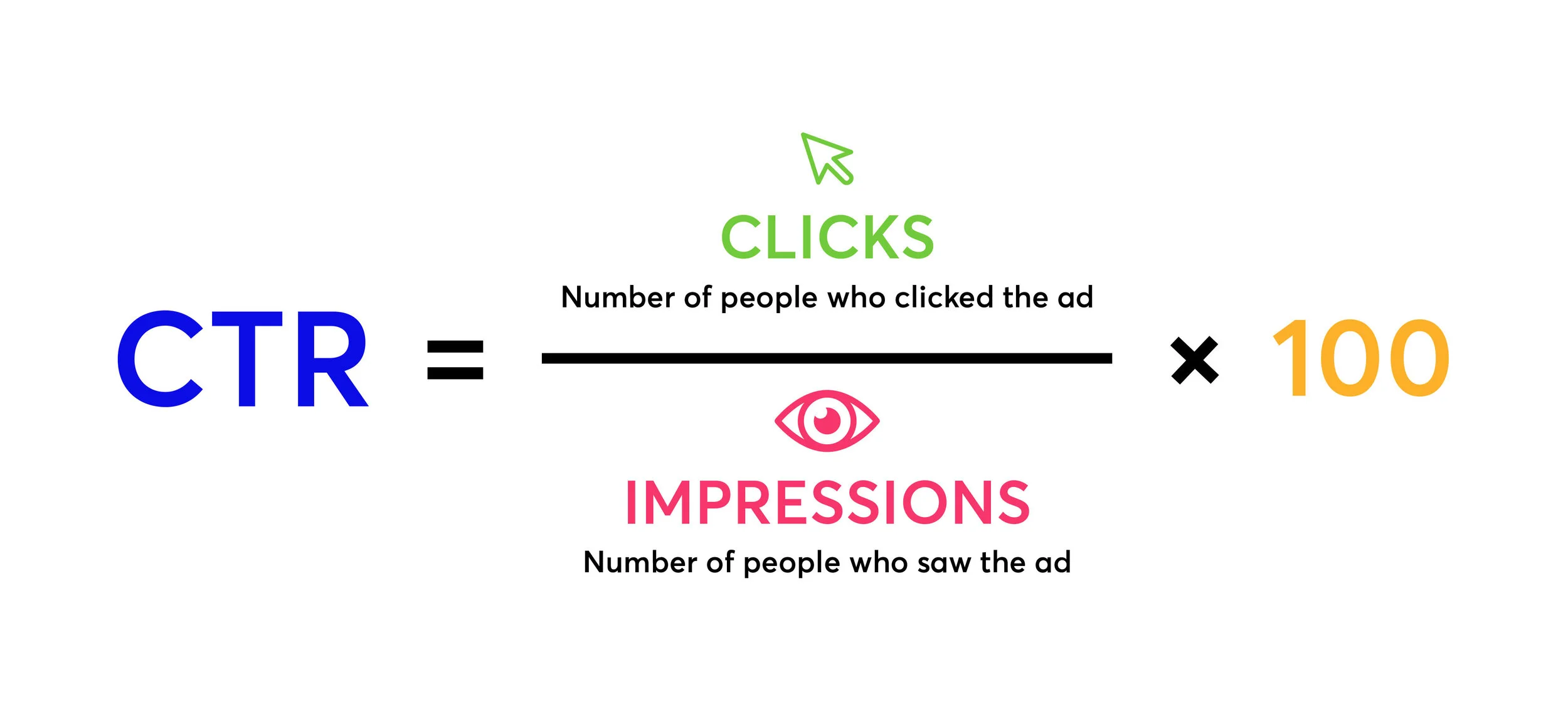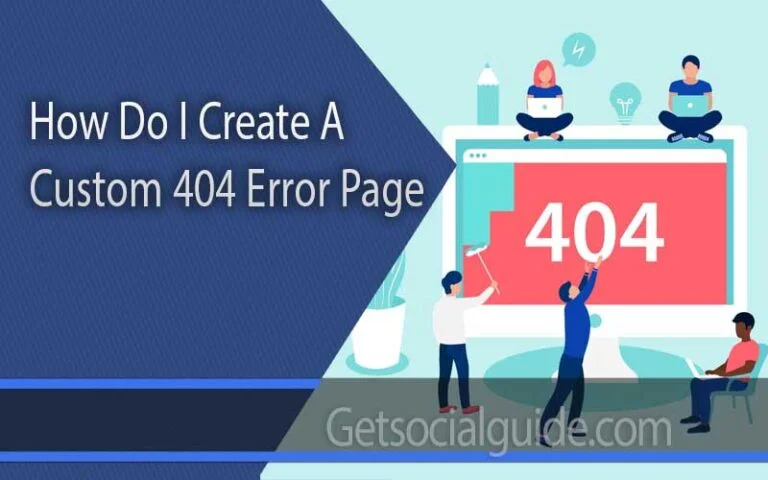5 Ways to Get a Good Click-Through Rate (CTR)
Introduction
click-through rate (CTR) is a crucial metric in digital marketing that measures the number of clicks an ad or link receives divided by the number of impressions. A high CTR indicates effective audience engagement and increased website traffic. To maximize CTR, employ strategies such as crafting compelling ad copy, using relevant keywords, optimizing ad extensions, implementing ad personalization, and conducting A/B testing. Regularly monitor and analyze campaign performance, and adapt your approach based on insights gained. A high CTR enhances visibility, boosts conversions, and fosters business growth.
1. Write Compelling Ad Copy
The key to achieving a high Click-Through Rate (CTR) lies in crafting compelling ad copy that effectively captures the attention of your intended audience. To accomplish this, it is crucial to develop a thorough understanding of your audience’s pain points, desires, and motivations. By grasping these insights, you can tailor your ad copy to resonate with their specific needs. Here’s how you can create persuasive ad copy that drives a strong CTR:
Know your audience: Conduct thorough research to gain deep insights into your target audience. Understand their demographics, interests, and behaviors. Identify their pain points, desires, and motivations related to your product or service.
Persuasive language: Once you have a solid understanding of your audience, use persuasive language that speaks directly to them. Address their pain points and emphasize how your product or service can solve their problems or fulfill their desires. Craft your copy in a way that appeals to their emotions and captures their attention.
Highlight benefits: Clearly communicate the unique benefits and value propositions of your product or service. Showcase how it can improve their lives, save time, save money, or provide convenience. Focus on the aspects that are most appealing to your target audience.
Compelling CTAs: Include strong and compelling calls-to-action (CTAs) in your ad copy. Encourage users to take the desired action by using action-oriented language. Make your CTAs clear, concise, and enticing. For example, use phrases like “Shop Now,” “Learn More,” “Get Started,” or “Sign up Today” to prompt users to click.
Test and optimize: Experiment with different variations of your ad copy to determine which ones yield the best results. A/B test different headlines, body texts, CTAs, or even visuals. Monitor the performance metrics, such as CTR, conversion rate, and engagement, to identify the most effective combinations. Continuously refine and optimize your ad copy based on the insights gained from these tests.
Remember, creating compelling ad copy is an ongoing process. Stay updated on industry trends, audience preferences, and competitors’ strategies. By constantly iterating and improving your ad copy based on performance data, you can maximize your CTR and drive greater success in your advertising campaigns.
2. Utilize Relevant Keywords
Using relevant keywords in your ad copy and aligning them with your SEO strategy can have a substantial impact on improving your Click-Through Rate (CTR). Here’s how you can effectively incorporate keywords to boost your CTR:
- Conduct keyword research: Start by conducting comprehensive keyword research to identify the terms and phrases that your target audience is using when searching for products or services similar to yours. Use tools like Google Keyword Planner, SEMrush, or Moz Keyword Explorer to discover relevant keywords with high search volume and low competition.
- Understand search intent: Analyze the search intent behind each keyword. Determine whether users are looking for information, seeking a specific product or service, or ready to make a purchase. This understanding will help you align your ad copy with the users’ intent and create more targeted and relevant ads.
- Use keywords in ad headlines: Incorporate your target keywords into your ad headlines to make them more compelling and relevant. By featuring the search terms users are actively looking for, you increase the likelihood of attracting their attention and generating clicks. Ensure that the headlines are enticing and accurately represent the content of your landing page.
- Include keywords in ad descriptions: Utilize keywords naturally in your ad descriptions to reinforce the relevance of your ad copy. Craft persuasive and informative descriptions that highlight the benefits and unique selling points of your product or service. By incorporating keywords seamlessly, you can capture the interest of users and entice them to click on your ads.
- Optimize display URLs: Customize your display URLs to include relevant keywords whenever possible. While the display URL doesn’t affect the landing page destination, it can influence users’ perception of your ad’s relevance. Incorporating keywords in the display URL can make your ad appear more pertinent to their search query and increase the likelihood of receiving clicks.
- Monitor and refine: Continuously monitor the performance of your ads and keywords. Track the CTR and other relevant metrics to identify which keywords and ad variations are driving the most clicks and conversions. Use this data to refine your keyword selection, ad copy, and overall SEO strategy.
3. Optimize Ad Extensions
Ad extensions are valuable tools that can enhance the visibility and effectiveness of your ads. By providing additional information and links, ad extensions offer more context and appeal to potential customers. Here are some popular ad extensions to leverage:
- Sitelink extensions: Sitelink extensions allow you to include additional links within your ad, directing users to specific pages on your website. This gives users more options to explore and encourages them to click on the links that are most relevant to their needs. Use sitelink extensions to highlight popular products, promotions, or specific service offerings.
- Call extensions: Call extensions enable users to call your business directly from the ad, either by clicking on the phone number or using click-to-call functionality on mobile devices. This extension is particularly useful for businesses that rely on phone inquiries or appointments. Include call extensions to make it easy for potential customers to contact you directly.
- Location extensions: If you have a physical storefront or multiple locations, location extensions are a valuable choice. They display your business address, contact details, and a map marker alongside your ad. This extension helps users find your business easily and is especially beneficial for local searches. It can also increase foot traffic to your physical location.
- Structured snippets: Structured snippets allow you to highlight specific aspects of your products or services. This extension presents a list of features or categories related to your offerings, providing users with more information about what you provide. Use structured snippets to showcase different product lines, service categories, or key features to entice users and encourage them to click.
When utilizing ad extensions, keep these best practices in mind:
- Relevance: Ensure that the ad extensions you choose are relevant to your business and align with your goals. Select extensions that provide additional value and information to users.
- Strong CTAs: Incorporate compelling calls-to-action (CTAs) within your ad extensions. Encourage users to take action, whether it’s to visit your website, call your business, or explore specific offerings.
- Regular optimization: Monitor the performance of your ad extensions regularly. Test different variations and track the results to identify which extensions and CTAs drive the highest engagement and conversions. Optimize your extensions accordingly to maximize their impact.
By leveraging ad extensions effectively, you can provide more information, increase the visibility of your ads, and ultimately drive higher click-through rates. Experiment with different extensions and CTAs to find the combination that resonates best with your target audience and helps achieve your advertising objectives.
4. Leverage Ad Personalization

Personalizing your ads based on the user’s demographics, interests, or behavior is a powerful strategy to improve your Click-Through Rate (CTR). By tailoring your ads to specific audience segments, you can deliver more relevant and engaging content that resonates with users. Here’s how you can effectively personalize your ads:
- Utilize targeting options: Take advantage of the targeting options provided by advertising platforms. These options allow you to define specific demographics, such as age, gender, location, and interests. By selecting the appropriate targeting parameters, you can ensure your ads are displayed to the right audience.
- Segment your audience: Divide your target audience into meaningful segments based on their characteristics, preferences, or behavior. For example, you might create segments for different age groups, geographic locations, or interests. By understanding the unique needs and preferences of each segment, you can tailor your ad content accordingly.
- Craft personalized ad copy: Develop ad copy that speaks directly to each segment of your audience. Use language and messaging that aligns with their demographics, interests, or pain points. Highlight the specific benefits or solutions that are most relevant to each segment. By customizing your ad copy, you demonstrate that you understand and can address their individual needs.
- Create specific offers or promotions: Develop customized offers or promotions for different audience segments. For example, you might offer a discount for first-time customers or provide a special package for a particular age group. Tailor your offers to appeal to the specific interests or needs of each segment. This personalization can significantly increase the attractiveness of your ads.
- Test and optimize: Continuously monitor and analyze the performance of your personalized ads. Track the CTR and other relevant metrics for each audience segment. Experiment with different variations and messaging strategies to determine which personalized ads resonate the most with each segment. Optimize your ads based on the insights gained from these tests.
By personalizing your ads based on demographics, interests, or behavior, you can deliver more relevant and engaging content to your audience. This personalization enhances the user experience, captures attention, and increases the likelihood of users clicking on your ads. Remember to regularly review and refine your targeting options and ad content to ensure ongoing effectiveness and maximize your CTR.
5. A/B Test Your Ad Campaigns
A/B testing is a crucial practice for optimizing your ads and achieving a higher Click-Through Rate (CTR). By creating multiple versions of your ads and comparing their performance, you can identify the most effective elements and continuously improve your campaigns. Here’s how you can implement A/B testing to optimize your ads for a higher CTR:
- Define test variables: Start by determining the elements you want to test. This could include headlines, ad copy, visuals, CTAs, landing pages, or even targeting parameters. Clearly define the variables you will be testing to ensure meaningful and actionable results.
- Create ad variants: Develop multiple versions of your ads, each with a different element being tested. For example, you might create two versions with different headlines or two versions with different CTAs. Ensure that each ad variant is distinct and clearly reflects the specific element being tested.
- Split your audience: Divide your target audience into separate groups and show each group a different ad variant. This can be done using A/B testing tools available on advertising platforms. It’s essential to ensure that the audience groups are randomized and representative to obtain accurate results.
- Monitor and measure performance: Track the performance of each ad variant by monitoring key metrics such as CTR, conversion rate, engagement, and other relevant indicators. Use analytics tools and advertising platform data to gather insights on how each ad variant is performing.
- Analyze and compare results: Analyze the results of your A/B tests to determine which ad variants are generating the highest CTR. Look for significant differences in performance between the variants. Identify patterns, trends, and insights that can help you understand why certain elements are more effective in driving clicks.
- Iterate and refine: Based on the insights gained from the A/B testing, make data-driven decisions to optimize your ads. Implement the successful elements and combinations that yield the highest CTR. Continuously refine your ad campaigns by experimenting with new variants and iterations to further improve performance.
- Ongoing optimization: A/B testing should be an ongoing process. As you gather more data and insights, continue to refine your ads and test new variations. Stay updated on industry trends, audience preferences, and competitive benchmarks to ensure your ads remain relevant and effective.
By conducting A/B tests, you can systematically evaluate the effectiveness of different ad elements and continuously optimize your campaigns for a higher CTR. Remember to analyze the results carefully, implement changes based on insights, and iterate your testing and optimization strategies to achieve long-term success.

FAQs
FAQ 1: How can I track my CTR?
To track your CTR, you can use analytics tools provided by the advertising platforms or implement tracking codes on your website. Platforms like Google Ads provide detailed performance reports that show the number of clicks your ads receive. By monitoring your CTR regularly, you can identify trends, make data-driven decisions, and optimize your campaigns for better results.
FAQ 2: What is a good CTR?
A good CTR can vary depending on the industry, platform, and specific campaign goals. However, as a general guideline, a CTR above 2% is considered decent, while a CTR above 5% is considered excellent. Keep in mind that the average CTR can vary across different industries and ad formats, so it’s essential to benchmark your performance against your own historical data or industry averages.
FAQ 3: Can I improve my CTR without increasing my ad budget?
Yes, you can improve your CTR without increasing your ad budget by focusing on optimizing your ad copy, targeting the right keywords, utilizing ad extensions, personalizing your ads, and conducting A/B testing. These strategies help you make the most out of your existing budget by attracting more clicks from a relevant audience.
FAQ 4: How can I decrease my bounce rate after getting a good CTR?
To decrease your bounce rate, ensure that your landing page aligns with the expectations set by your ad copy. Deliver a seamless user experience by providing relevant and valuable content on your landing page. Optimize your page load speed, make your website mobile-friendly, and have clear and compelling CTAs to guide visitors towards the desired action. A positive user experience on your landing page increases the chances of conversions and repeat visits.
FAQ 5: Should I prioritize CTR over conversions?
While CTR is an important metric for measuring the effectiveness of your ads, it shouldn’t be the sole focus. Ultimately, conversions and return on investment (ROI) are the key goals of any marketing campaign. Strike a balance between CTR and conversions by optimizing your ad campaigns for both metrics. Monitor your conversion rate and overall campaign performance to ensure that your efforts translate into meaningful results.
Conclusion
Having a strong click-through rate (CTR) is vital for the success of your digital marketing campaigns. You can achieve this by employing various effective strategies. These include crafting captivating ad copy, employing appropriate keywords, optimizing ad extensions, utilizing ad personalization, and conducting A/B testing. By implementing these techniques, you can boost your CTR, driving more traffic to your website. It is crucial to consistently monitor and analyze your campaign performance, allowing you to adapt and refine your approach based on the insights you gain. Remember, a high CTR not only enhances your visibility but also increases the likelihood of conversions and promotes business growth.




